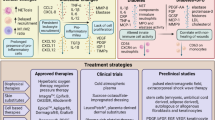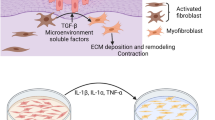Abstract
Chronic wounds and in particular diabetic foot ulcers (DFUs) are a growing clinical challenge, but the underlying molecular pathophysiological mechanisms are unclear. Recently, we reported reduced levels of the immunomodulating and antimicrobial S100A8/A9 in non-healing venous leg ulcers (VLUs), while another study found increased S100A8/A9 in DFUs. To clarify these apparently contradictory findings, we compared S100A8/A9 as well as an inducer, lipopolysaccharide (LPS) and selected innate immune response mediators in wound fluids from non-healing DFUs and VLUs with healing wounds. Wound fluids were collected from neuropathic DFUs (n = 6) and VLUs (n = 9) of median 2-year duration, and split-thickness skin graft donor site wounds (n = 10) by standardized method. None of the patients had ischaemic extremities or clinically infected wounds. LPS was determined by limulus amoebocyte lysate test, and S100A8/A9, granulocyte colony-stimulating factor (G-CSF), interleukin (IL)-10 and vascular endothelial growth factor (VEGF) by immunospecific quantitative assays. LPS levels were median 8.7 (interquartile range 5.4–21.2) ng/ml in DFUs compared with 121 (22–2000) ng/ml in VLUs. S100A8/A9 was higher (p = 0.020) in DFUs [718 (634-811) µg/ml] than in VLUs [303 (252–533) µg/ml]. Neither G-CSF nor IL-10 wound fluid levels differed significantly between the chronic wound groups. VEGF levels correlated with LPS (r = 0.758, p = 0.011, n = 10) and were higher (p = 0.024) in VLU wound fluids. LPS (p < 0.0001), S100A8/A9 (p = 0.005), G-CSF (p = 0.003), IL-10 (p = 0.003) and VEGF (p = 0.005) were increased in chronic wound fluids combined compared with the sterile donor site wound fluids. The protein alterations in the wounds were not reflected in the patients’ sera. Low S100A8/A9 levels may contribute to poor wound healing in colonized chronic wounds with striking difference between DFUs and VLUs.


Similar content being viewed by others
References
Abtin A, Eckhart L, Glaser R, Gmeiner R, Mildner M, Tschachler E (2010) The antimicrobial heterodimer S100A8/S100A9 (calprotectin) is upregulated by bacterial flagellin in human epidermal keratinocytes. J Invest Dermatol 130:2423–2430. doi:10.1038/jid.2010.158
Ågren MS, Ostenfeld U, Kallehave F, Gong Y, Raffn K, Crawford ME, Kiss K, Friis-Møller A, Gluud C, Jorgensen LN (2006) A randomized, double-blind, placebo-controlled multicenter trial evaluating topical zinc oxide for acute open wounds following pilonidal disease excision. Wound Repair Regen 14:526–535
Bates DO, Curry FE (1996) Vascular endothelial growth factor increases hydraulic conductivity of isolated perfused microvessels. Am J Physiol 271:H2520–H2528
Bjarnsholt T, Kirketerp-Møller K, Kristiansen S, Phipps R, Nielsen AK, Jensen PO, Høiby N, Givskov M (2007) Silver against Pseudomonas aeruginosa biofilms. APMIS 115:921–928. doi:10.1111/j.1600-0463.2007.apm_646.x
Danielsen P, Jørgensen B, Karlsmark T, Jorgensen LN, Ågren MS (2008) Effect of topical autologous platelet-rich fibrin versus no intervention on epithelialization of donor sites and meshed split-thickness skin autografts: a randomized clinical trial. Plast Reconstr Surg 122:1431–1440. doi:10.1097/PRS.0b013e318188202c
Dinh T, Tecilazich F, Kafanas A, Doupis J, Gnardellis C, Leal E, Tellechea A, Pradhan L, Lyons TE, Giurini JM, Veves A (2012) Mechanisms involved in the development and healing of diabetic foot ulceration. Diabetes 61:2937–2947. doi:10.2337/db12-0227
Drinkwater SL, Burnand KG, Ding R, Smith A (2003) Increased but ineffectual angiogenic drive in nonhealing venous leg ulcers. J Vasc Surg 38:1106–1112
Fadini GP, Albiero M, Millioni R, Poncina N, Rigato M, Scotton R, Boscari F, Brocco E, Arrigoni G, Villano G, Turato C, Biasiolo A, Pontisso P, Avogaro A (2014) The molecular signature of impaired diabetic wound healing identifies serpinB3 as a healing biomarker. Diabetologia 57:1947–1956. doi:10.1007/s00125-014-3300-2
Falanga V (2005) Wound healing and its impairment in the diabetic foot. Lancet 366:1736–1743. doi:10.1016/S0140-6736(05)67700-8
Galkowska H, Wojewodzka U, Olszewski WL (2006) Chemokines, cytokines, and growth factors in keratinocytes and dermal endothelial cells in the margin of chronic diabetic foot ulcers. Wound Repair Regen 14:558–565
Gao N, Sang Yoon G, Liu X, Mi X, Chen W, Standiford TJ, Yu FS (2013) Genome-wide transcriptional analysis of differentially expressed genes in flagellin-pretreated mouse corneal epithelial cells in response to Pseudomonas aeruginosa: involvement of S100A8/A9. Mucosal Immunol 6:993–1005. doi:10.1038/mi.2012.137
Gardner SE, Haleem A, Jao YL, Hillis SL, Femino JE, Phisitkul P, Heilmann KP, Lehman SM, Franciscus CL (2014) Cultures of diabetic foot ulcers without clinical signs of infection do not predict outcomes. Diabetes Care 37:2693–2701. doi:10.2337/dc14-0051
Gardner SE, Hillis SL, Heilmann K, Segre JA, Grice EA (2013) The neuropathic diabetic foot ulcer microbiome is associated with clinical factors. Diabetes 62:923–930. doi:10.2337/db12-0771
Gjødsbøl K, Christensen JJ, Karlsmark T, Jørgensen B, Klein BM, Krogfelt KA (2006) Multiple bacterial species reside in chronic wounds: a longitudinal study. Int Wound J 3:225–231
Grönberg A, Zettergren L, Ågren MS (2011) Stability of the cathelicidin peptide LL-37 in a non-healing wound environment. Acta Derm Venereol 91:511–515. doi:10.2340/00015555-1102
Halawi A, Abbas O, Mahalingam M (2014) S100 proteins and the skin: a review. J Eur Acad Dermatol Venereol 28:405–414. doi:10.1111/jdv.12237
Hansson C, Hoborn J, Moller A, Swanbeck G (1995) The microbial flora in venous leg ulcers without clinical signs of infection. Repeated culture using a validated standardised microbiological technique. Acta Derm Venereol 75:24–30
Høgsberg T, Bjarnsholt T, Thomsen JS, Kirketerp-Møller K (2011) Success rate of split-thickness skin grafting of chronic venous leg ulcers depends on the presence of Pseudomonas aeruginosa: a retrospective study. PLoS One 6:e20492. doi:10.1371/journal.pone.0020492
Kawaguchi H, Hizuta A, Tanaka N, Orita K (1995) Role of endotoxin in wound healing impairment. Res Commun Mol Pathol Pharmacol 89:317–327
Kirketerp-Møller K, Jensen PO, Fazli M, Madsen KG, Pedersen J, Moser C, Tolker-Nielsen T, Høiby N, Givskov M, Bjarnsholt T (2008) Distribution, organization, and ecology of bacteria in chronic wounds. J Clin Microbiol 46:2717–2722. doi:10.1128/JCM.00501-08
Krisp C, Jacobsen F, McKay MJ, Molloy MP, Steinstraesser L, Wolters DA (2013) Proteome analysis reveals antiangiogenic environments in chronic wounds of diabetes mellitus type 2 patients. Proteomics 13:2670–2681. doi:10.1002/pmic.201200502
Libau J, Heidrich S, Berger A, Tenenhaus M, Rennekampff HO (2007) Expression of epithelial matrix molecules collagen and laminin and corresponding integrins in chronic wounds. Eur J Plast Surg 29:235–242
Loryman C, Mansbridge J (2008) Inhibition of keratinocyte migration by lipopolysaccharide. Wound Repair Regen 16:45–51. doi:10.1111/j.1524-475X.2007.00290.x
Lundberg JE, Roth TP, Dunn RM, Doyle JW (1998) Comparison of IL-10 levels in chronic venous insufficiency ulcers and autologous donor tissue. Arch Dermatol Res 290:669–673
Marston WA (2006) Risk factors associated with healing chronic diabetic foot ulcers: the importance of hyperglycemia. Ostomy Wound Manage 52:26–39
McInnes RL, Cullen BM, Hill KE, Price PE, Harding KG, Thomas DW, Stephens P, Moseley R (2014) Contrasting host immuno-inflammatory responses to bacterial challenge within venous and diabetic ulcers. Wound Repair Regen 22:58–69. doi:10.1111/wrr.12133
Moor AN, Vachon DJ, Gould LJ (2009) Proteolytic activity in wound fluids and tissues derived from chronic venous leg ulcers. Wound Repair Regen 17:832–839. doi:10.1111/j.1524-475X.2009.00547.x
Nacken W, Kerkhoff C (2007) The hetero-oligomeric complex of the S100A8/S100A9 protein is extremely protease resistant. FEBS Lett 581:5127–5130. doi:10.1016/j.febslet.2007.09.060
Nuutila K, Siltanen A, Peura M, Bizik J, Kaartinen I, Kuokkanen H, Nieminen T, Harjula A, Aarnio P, Vuola J, Kankuri E (2012) Human skin transcriptome during superficial cutaneous wound healing. Wound Repair Regen 20:830–839. doi:10.1111/j.1524-475X.2012.00831.x
Pickwell KM, Siersma VD, Kars M, Holstein PE, Schaper NC (2013) Diabetic foot disease: impact of ulcer location on ulcer healing. Diabetes Metab Res Rev 29:377–383. doi:10.1002/dmrr.2400
Sato N, Kashima K, Tanaka Y, Shimizu H, Mori M (1997) Effect of granulocyte-colony stimulating factor on generation of oxygen-derived free radicals and myeloperoxidase activity in neutrophils from poorly controlled NIDDM patients. Diabetes 46:133–137
Schmohl M, Beckert S, Joos TO, Königsrainer A, Schneiderhan-Marra N, Löffler MW (2012) Superficial wound swabbing: a novel method of sampling and processing wound fluid for subsequent immunoassay analysis in diabetic foot ulcerations. Diabetes Care 35:2113–2120. doi:10.2337/dc11-2547
Silvescu CI, Sackstein R (2014) G-CSF induces membrane expression of a myeloperoxidase glycovariant that operates as an E-selectin ligand on human myeloid cells. Proc Natl Acad Sci USA 111:10696–10701. doi:10.1073/pnas.1320833111
Stallmeyer B, Pfeilschifter J, Frank S (2001) Systemically and topically supplemented leptin fails to reconstitute a normal angiogenic response during skin repair in diabetic ob/ob mice. Diabetologia 44:471–479. doi:10.1007/s001250051645
Steinbakk M, Naess-Andresen CF, Lingaas E, Dale I, Brandtzaeg P, Fagerhol MK (1990) Antimicrobial actions of calcium binding leucocyte L1 protein, calprotectin. Lancet 336:763–765
Sun Y, Lu Y, Engeland CG, Gordon SC, Sroussi HY (2013) The anti-oxidative, anti-inflammatory, and protective effect of S100A8 in endotoxemic mice. Mol Immunol 53:443–449. doi:10.1016/j.molimm.2012.10.002
Thomsen TR, Aasholm MS, Rudkjøbing VB, Saunders AM, Bjarnsholt T, Givskov M, Kirketerp-Møller K, Nielsen PH (2010) The bacteriology of chronic venous leg ulcer examined by culture-independent molecular methods. Wound Repair Regen 18:38–49. doi:10.1111/j.1524-475X.2009.00561.x
Trøstrup H, Lundquist R, Christensen LH, Jorgensen LN, Karlsmark T, Haab BB, Ågren MS (2011) S100A8/A9 deficiency in nonhealing venous leg ulcers uncovered by multiplexed antibody microarray profiling. Br J Dermatol 165:292–301. doi:10.1111/j.1365-2133.2011.10384.x
van Vught LA, Endeman H, Meijvis SC, Zwinderman AH, Scicluna BP, Biesma DH, van der Poll T (2014) The effect of age on the systemic inflammatory response in patients with community-acquired pneumonia. Clin Microbiol Infect 20:1183–1188. doi:10.1111/1469-0691.12717
Zillmer R, Trøstrup H, Karlsmark T, Ifversen P, Ågren MS (2011) Duration of wound fluid secretion from chronic venous leg ulcers is critical for interleukin-1α, interleukin-1β, interleukin-8 levels and fibroblast activation. Arch Dermatol Res 303:601–606. doi:10.1007/s00403-011-1164-6
Acknowledgments
Hanne Vogensen, Lone Haase and Rebekka Nielsen collected the sera and wound fluids.
Author information
Authors and Affiliations
Corresponding author
Electronic supplementary material
Below is the link to the electronic supplementary material.
Rights and permissions
About this article
Cite this article
Trøstrup, H., Holstein, P., Christophersen, L. et al. S100A8/A9 is an important host defence mediator in neuropathic foot ulcers in patients with type 2 diabetes mellitus. Arch Dermatol Res 308, 347–355 (2016). https://doi.org/10.1007/s00403-016-1646-7
Received:
Revised:
Accepted:
Published:
Issue Date:
DOI: https://doi.org/10.1007/s00403-016-1646-7




